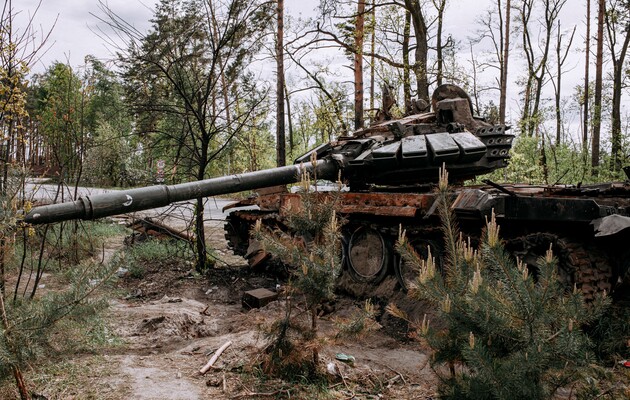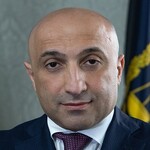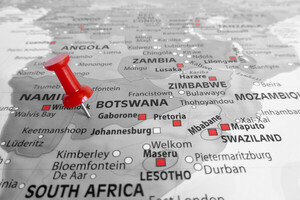International crimes of Russia: What you need to know about the role of military personnel in documenting them

At the beginning of April 2022, members of the Territorial Defense Forces of the Armed Forces of Ukraine entered the newly liberated cities of Kyiv region: Irpin, Bucha, Hostomel, Borodianka. What we saw there was etched in our memory forever. We saw the footage that was spread around the world through photos and videos directly at the sites of those terrible events. The mutilated bodies of civilians who until recently had been living an ordinary life, shot and burnt cars with inscriptions "children", destroyed blocks of houses and churches, graves with homemade identification plates right in parks and on the adjacent territories. All these cities have become the scene of large-scale international crimes committed by the Russian army.
Most of us, Ukrainians, think that the crimes committed by Russian soldiers on our territory are quite obvious, so it will be easy to prove them in courts, including international ones. However, in reality, this is not the case. In order to prove guilt in the most serious crimes committed in wartime, evidence is certainly needed. And all that we saw in the liberated Kyiv region was evidence of the commitment of horrific crimes. It turned out that recording them was a big challenge for Ukraine's legal system. First of all, because of the scale and lack of the necessary number of qualified and experienced personnel to work with this category of crimes. However, we could not lose evidence, because bringing to justice those responsible for international crimes is a matter of honor for Ukraine and the world and an element of transitional justice, which focuses on restoring the rights of victims. Unfortunately, Ukraine knows what it is like to lose evidence of international crimes. When the Russian aggression began in 2014, we had no experience with international criminal justice and lost a lot of time. For example, we can recall the so-called "military field tribunals" created by Ihor Hirkin, which existed during the occupation of Sloviansk in 2014. By their decision, people were killed, which could probably qualify as extrajudicial executions. Instead, after the city was de-occupied, important evidence about these "tribunals" was lost.
However, the situation did improve in 2022. After all, civil society came to the aid of the judiciary again, as it began to professionally document alleged international crimes in 2014 and has been open to cooperation ever since. And after February 24, 2022, most human rights organizations and many journalists reoriented themselves to work with the topic of international crimes, and strong international expert support emerged.
And while the situation with documentation has more or less improved in the liberated territories, thanks in no small part to the same civil society organizations (including two large coalitions, "Ukraine.5 AM" and "Tribunal for Putin"). It was in the war zones, where international humanitarian and human rights law is regularly violated, that difficulties arose. For the most part, neither non-governmental organizations nor law enforcement agencies have access to these areas. And here, once again, the military proved to be the saviors.
The Ukrainian army is not the first to involve military personnel in documenting alleged international crimes. This is a proven practice. Military personnel were involved in documenting crimes already during the Second World War. It should be recalled that in 1945, the Third U.S. Army, under the command of General George Patton, created a war crimes division, which included the future prosecutor of the Nuremberg trials, Benjamin Ferencz. He personally, as part of the American armed forces, worked on documenting the war crimes of Nazi Germany, in particular in the concentration camps. This experience undoubtedly helped in bringing charges in the trials following the war.
In addition, this practice is reflected in the Guidelines on investigating violations of international humanitarian law prepared by the International Committee of the Red Cross. They set out recommendations that may facilitate the collection of evidence of war crimes. In particular, in the absence of authorized representatives of the authorities, the commander present at the scene of the incident should take all possible measures to ensure that relevant information and evidence is obtained and preserved. It is also common practice for military personnel to record facts of international crimes in many countries.
What is the situation in Ukraine?
At present, almost the entire state apparatus, including legislators, understands the importance of timely work and ensuring conditions for documenting international crimes.
It is important that the Commander-in-Chief of the Armed Forces of Ukraine Valerii Zaluzhnyi, has not only contributed to making compliance with international humanitarian law a priority for the Ukrainian army, but has also involved the military in documenting alleged international crimes. In addition, the army already has key actors involved in the implementation of IHL, such as military lawyers in cooperation with civil-military cooperation, moral and psychological support, and intelligence.
Accordingly, on September 20, 2022, a the Working Group on the Implementation of International Humanitarian Law and Participation in the Provision of Legal Services was established within the Command of the TRO Forces of the Armed Forces of Ukraine, which, among other things, is engaged in recording international crimes and processing recorded cases for the Central Legal Department of the General Staff of the Armed Forces of Ukraine.
Why is it important for military personnel to be involved in documenting international crimes in areas of military responsibility (combat zones and "gray" zones)?
- The need for timely recording of alleged crimes in the combat zones. Over time, and even more so on the contact line, evidence is lost. And the close proximity to the front line makes it impossible for law enforcement officials and, especially, national and international human rights organizations to work on the ground. Therefore, soldiers who are at the scenes of war crimes are indispensable in these cases;
- A high level of trust to the military. The military is almost the only "window" to the world for civilians who remain in the war zones, so they share information that may be valuable to the investigation. For example, in connection with the amendments to the law "On National Resistance», it is the members of the TRO forces who organize the provision of free legal aid to civilians in the respective zones;
- Documentation of alleged war crimes committed by the enemy undoubtedly helps to implement international humanitarian law in the Ukrainian army and is an important preventive measure. In this way, military personnel learn the norms of IHL.
Clearly, the military's priority is to defend the sovereignty of our country with arms in hand. Realizing that they are combatants, a party to the conflict. But it is often the soldiers who are the only witnesses of crimes committed by the aggressor's army. Therefore, their testimonies and the cases they document are important. The more facts that are properly recorded, the more likely we are to get closer to establishing justice and punishing the perpetrators. On the other hand, it is important to understand that recording should be done only whenever possible, i.e. when this process does not endanger the military and their colleagues and when it does not interfere with the performance of combat missions. After all, the use of technical means (drones, video recorders) can sometimes help the enemy, and the use of phones that do not always have secure communications is dangerous. Nevertheless, whenever possible, the military could make priority recordings. After the de-occupation of the territories or the change of the front line, when some of the territories become relatively safe, the investigative authorities are already engaged in verifying the existing data and documenting new ones.
At the same time, along with the question of who should record war crimes in the areas of responsibility of military personnel, another equally important question appears: how to do it correctly?
It is important to understand that documenting crimes is not as easy as it may seem. For example, it is not just a matter of taking a photo or video of the alleged crime scene. It's about the admissibility of evidence and the requirements of national and international justice systems. After all, not just any photo or video can be accepted as evidence by the court. In fact, documentation has many peculiarities. For example, it is important to indicate the place of shooting and the date, if it is a video, to hold each frame for a certain time, in no case to move or destroy objects related to the scene, to film the place from different angles, etc.
Accordingly, the awareness of the people who will be the first to have access to the evidence determines whether it will be possible to properly record the alleged crimes and transfer the evidence to the competent authorities.
That is why the Command of the Territorial Defense Forces of the Armed Forces of Ukraine, together with partners, has developed an algorithm for documenting international crimes and, as one of the important tools, an illustrated instruction "Documenting Human Rights Violations and International Humanitarian Law", which clearly and step by step describes how to properly record alleged international crimes.
Currently, the Working Group of the Territorial Defense Forces of the Armed Forces of Ukraine on the implementation of international humanitarian law and participation in the provision of legal services is implementing this instruction. It provides military units with the necessary materials, receives information from them about alleged war crimes, processes this information and systematizes it through the use of special software, and conducts thematic training. An example of such special software is the Delta information platform. Its practical benefit lies in the fact that it can help law enforcement agencies to model crimes by creating and verifying the evidence base.
Using specialized information platforms allows to: synchronize photo and video recordings over time; draw up plans and diagrams; and produce graphic images. For example, such options are convenient for establishing the circumstances of the destruction of cultural heritage sites. This is an extremely important issue at the moment, as, unfortunately, many cultural sites have been damaged in the war zone. Only the Working Group of the Territorial Defense Forces of the AF of Ukraine on the implementation of IHL, together with partners, recorded and entered 132 such facts into the database. Also, the above-mentioned programmatic capabilities could be used by interested public authorities and law enforcement agencies.
Information about the facts of the most serious international crimes committed in the context of armed conflict discovered by military personnel is transmitted to the competent authorities involved in the investigation of international crimes. Subsequently, they are verified and can be used by the UN Independent International Commission of Inquiry on violations in Ukraine, the International Criminal Court, the International Court of Justice, the ECHR, national courts, as well as courts of other countries when it comes to considering cases under the principle of universal jurisdiction. All this hard work of the military in cooperation with law enforcement to collect evidence of international crimes as a result of Russian aggression is done for the key goal of eventually helping to bring the perpetrators to justice.
Read this article in Ukrainian and russian.
Please select it with the mouse and press Ctrl+Enter or Submit a bug















 Login with Google
Login with Google